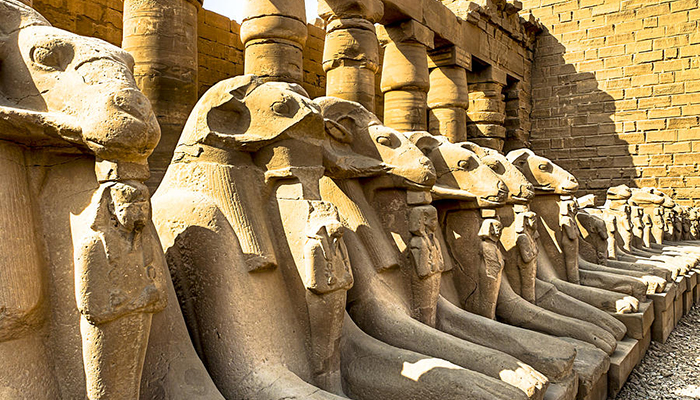
The Karnak Temple
Complex stands as one of ancient Egypt’s most impressive religious sites, located near Luxor, on the east bank of the Nile River. It represents a vast network of temples, chapels, pylons, and other structures constructed over centuries, reflecting the religious significance and the changing religious beliefs of different pharaohs.
Dedicated primarily to the god Amun, the complex was continually expanded and enhanced by successive pharaohs from the Middle Kingdom through the Ptolemaic period. The sprawling site covers around 200 acres, making it the largest ancient religious site in the world.
Its most prominent feature is the Great Hypostyle Hall, a forest of towering columns, some reaching 80 feet in height. These columns are adorned with intricate hieroglyphs and reliefs, depicting religious scenes and symbolic representations.
The Karnak complex comprises several temples, with the most significant being the Precinct of Amun-Re, the Precinct of Mut, and the Precinct of Montu. Each precinct housed various structures dedicated to different deities, with immense pylons marking the entrances and obelisks towering in reverence to the gods.
One of the most notable structures within the complex is the Sacred Lake, believed to have been used for ceremonial and ritual purposes, possibly for purification rituals or as a symbolic representation of the primordial waters of creation.
The Karnak Temple Complex serves as a testament to the grandeur and devotion of ancient Egyptian religious practices, attracting visitors from around the world who marvel at its architectural splendor and spiritual significance. Its vastness and the meticulous craftsmanship of its structures stand as a tribute to the skilled artisans and the enduring legacy of ancient Egypt.